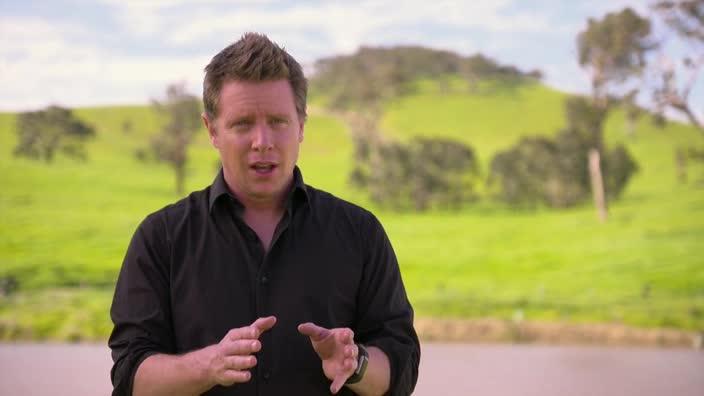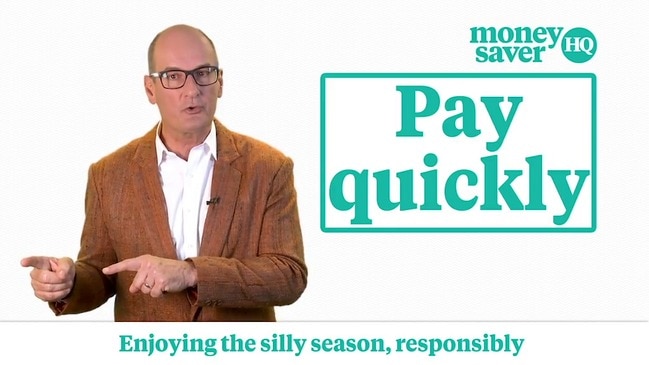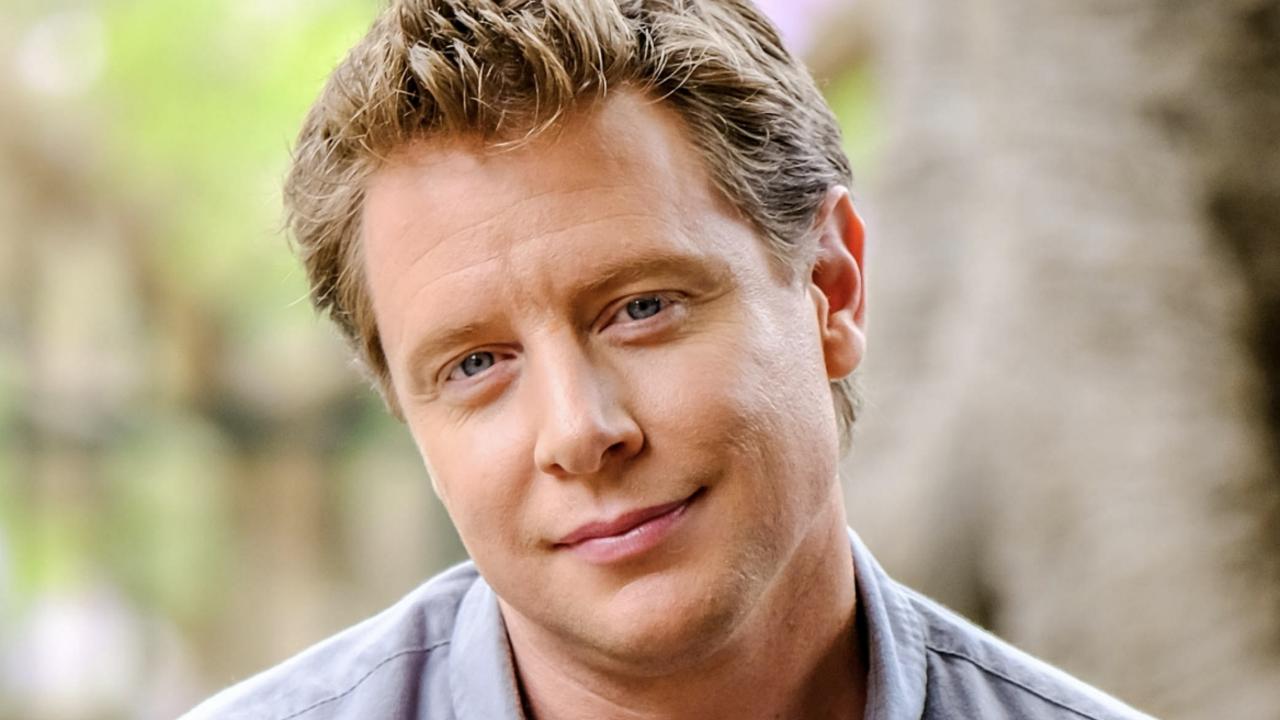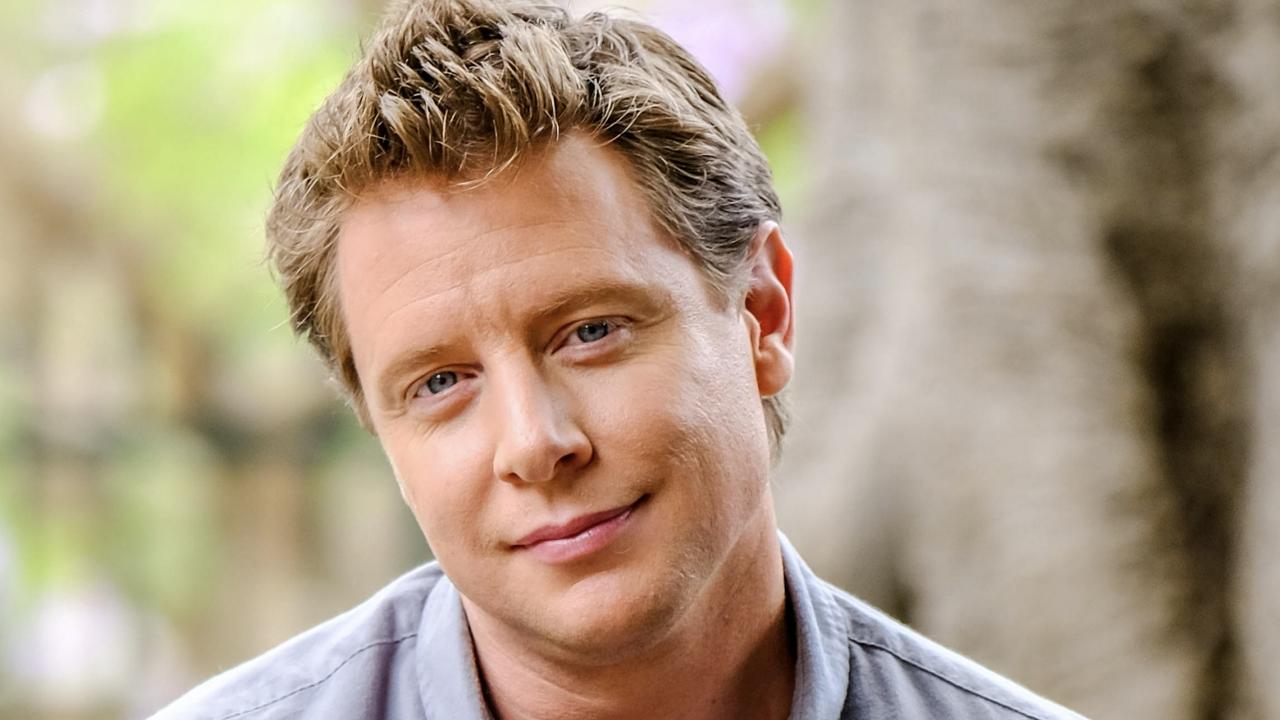Barefoot Investor: This Christmas, throw the books at ’em
The best Christmas gifts are educational so consider giving books to your loved ones and not only will it not break the bank, but they may learn something life-changing, writes Scott Pape.

Barefoot Investor
Don't miss out on the headlines from Barefoot Investor. Followed categories will be added to My News.
Christmas shopping sucks, right? Not for me.
Years ago, I cracked the Christmas shopping code: I buy people books.
Although I must confess, last year it didn’t work out so well.
I bought my mother-in-law Marie Kondo’s The Life Changing Magic of Cleaning Up.
She opened the present, scanned the title, and the look on her face said it all.
BAREFOOT INVESTOR WARNS OF CHRISTMAS OVERSPENDING
THE BEST BOOKS TO GIFT THIS CHRISTMAS
“Oh, I’m not saying you’re a hoarder … it’s just … a really good book. Merry … Christmas”, I added.
Silence.
Anyway, you’re not going to be that stupid, so here are the books I’ve got in my Santa sack this year:
Factfulness: Ten Reasons We’re Wrong About the World — and Why Things Are Better Than You Think
Bill Gates says this is one of the most important books he’s ever read.
Author Hans Rosling systematically unpacks fake news, sensationalist clickbait, and doom and gloom headlines with cold hard facts: actually, in almost every way, the world is getting much better.
While the media reports obsessively on the latest drama of the moment, the upward movement of human progress marches on with little fanfare. This book shows you how to look at the world in a rational, fact based way.
A perfect gift for your manic depressive, we’re going to hell in a handbasket, MAGA hat wearing brother-in-law.

Where Are The Customers’ Yachts? This year we’ve watched — gobs agape — at the sheer rat cunning of financial institutions: charging dead people for advice, ripping off the mentally disabled, and billing for advice they never gave.
Has it always been this bad?
Hell, yes!
Almost 80 years ago Fred Schwed wrote the book Where Are The Customers Yachts?
The title of the book comes from a legendary story about a visitor to New York who stands admiring the expensive yachts of the Wall Street brokers. He naively asks, “where are all the customers yachts?”.
Of course, there were none. As every bank CEO knows intuitively, the really big money is made in providing financial advice, rather than receiving it. This book will make you laugh and cry.
A great book for anyone who is reviewing their super fund fees over the holidays.
How to Break Up with Your Phone: Our phones (and the apps on them) are designed to be highly addictive. They manipulate our brain, suck up ever increasing amounts of our attention, and capture the one true resource we can never replace: our precious time.
Author Catherine Price explains how phones are changing our brains, and provides a four week program that shows you how to break up with your phone, and form a healthier relationship with your screen.
A great gift for … me.
And yes, you guessed it, I’ll also be gifting my book, The Barefoot Investor for
Families.
I’ll confess: while I originally wrote the book for parents and grandparents, a huge surprise for me has been how successful the book has been with kids.
I’m pitching it as a perfect stocking filler. After all, the skills the book teaches will set their kids up for life.
And that’s a pretty cool Christmas present to give, right?
Tread Your Own Path!

Q&As
RIGHT QUESTIONS
BARRY ASKS: I purchased your latest book, The Barefoot Investor for Families, and gave it to my nine-year-old son, who has taken to it like a duck to water.
He is enthusiastically helping with cooking, and has set up his three jam jars.
He has a presentation at school coming up and, due to inspiration from your book, he wants to do his talk on why his school should give Commbank the flick.
I don’t want to discourage him, as I too believe in the cause — but is it something best left for parents to bring up with the school?
BAREFOOT REPLIES:
What do I reckon?
I reckon this sounds like a life lesson he’ll remember for years to come.
Here are a few things I’d talk through with your son:
Explain that a credit card is a very expensive loan from a bank. Young people often get themselves in a lot of trouble with credit cards by borrowing too much. Credit cards tend to make everything you buy much more expensive. For most people — especially young people — the best credit card is no credit card.
And perhaps he could ask:
Why does Commbank’s Start Smart Program teach kids — in grade three — about the benefits of credit cards?
Then he could ask his teachers:
Have you ever got in trouble with a credit card?
When we get older, should we get one?
A big part of financial education is to be sceptical about what banks (and advertisers in general) offer up.
You’re teaching your son to be an independent thinker and to intelligently and respectfully question authority.
In this case, he’s got truth on his side: there is no justification for allowing a bank to spend millions of dollars for the exclusive right to teach our kids this core life skill, much less for rolling out a marketing program that is worth, according to one analyst, as much as $10 billion!
Let me know how he goes!

SWEET CHARITY
JILL ASKS: My daughter would like to donate the contents of her money box to a charity.
I really want to take her to one in person, rather than doing it online, so she can be a part of the process.
But I am finding it increasingly challenging to find information on where we can do this ‒— none of them seem to want to interact in person. Any ideas?
BAREFOOT REPLIES:
I think there are more meaningful ways to teach giving than handing over cash.
Instead, my experience is that food is the perfect way to teach your kids about giving.
Reason being, every kid knows what it’s like to be hungry: you can’t concentrate, and you’re irritable until you eat.
So, you can explain that on a typical day roughly three kids in her class will arrive at school hungry or without having eaten breakfast, according to Foodbank.
(This explains why about 1750 schools across the country have Breakfast Clubs, to ensure kids are getting their most important meal of the day. They’re in poor areas. They’re in wealthy areas. They’re in my home town.)
You can also explain that just because you can’t see their tummies rumbling doesn’t mean they’re not hungry.
Not only is food a powerful metaphor for kids, even better, your kid has the chance to do something about it.
Last year charities across Australia had to turn away 65,000 hungry people each month because there wasn’t enough food to go around.
However, there’s no need to start feeding the masses bread and fish like a motivated messiah.
Instead, when you’re next walking around the supermarket, ask your kids, “What can we buy for hungry people?”
You can donate things like canned foods, spreads, coffee, flour, sugar and baby food.
Have your kids bring along some money from their Give Jar so they can buy food with their own money, and then on the way home you can drop it off at the local Foodbank warehouse, or your local community charity that distributes food in your area (you can find their contact details from your local council).

SAVING GRACE
CALLUM WRITES: I bought your book while in severe financial difficulty — I actually had to save money for six weeks just to buy it!
Anyway, I am 10 months in and will never look back, having managed to pay off $25,574.23 worth of debt.
I still have a fair way to go, but I am churning through it. Thanks heaps!
BAREFOOT REPLIES:
Dude, you could have loaned it from the library!
What I love about your email (okay, testimonial), is how detailed you are with your digits:
You haven’t just paid back “twenty-five grand”, you’ve calculated it down to the cent!
A report this week by NAB found that 20 per cent of Australians said they don’t have even a cracker saved up.
Don’t let that be you.
If you’re following my plan, you should have nailed the first step: open your separate Mojo account, with an initial $2000 deposit.
And if you don’t have a spare $2000, look around your house and see what you can flog on Gumtree.
If you’ve got a burning money question, visit barefootinvestor.com
and #ASKBAREFOOT
The Barefoot Investor for Families: The Only Kids’ Money Guide You’ll Ever Need (HarperCollins) RRP $29.99. Available now in all good bookstores and online
The Barefoot Investor holds an Australian Financial Services Licence (302081). This is general advice only. It should not replace individual, independent, personal financial advice.


